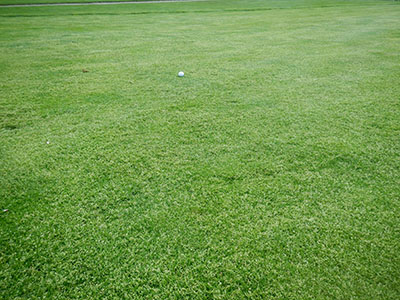Growing degree-days have accumulated quickly, but it may not yet be time to apply plant growth regulators to control annual bluegrass seedheads on golf courses.
Posted on March 9, 2017 by Kevin Frank, Michigan State University Extension, Department of Plant, Soil and Microbial Sciences
The quick start to the growing season in 2017 has resulted in many questions regarding growing degree-days (GDD) and application timing for Proxy/Primo to control annual bluegrass seedheads. The green wave of GDD reaching the application timing has swept into Michigan (see figure).
Many golf course superintendents use two applications of Proxy/Primo for managing annual bluegrass seedheads on putting greens. This combination has proven to be a reliable way to suppress seedheads and enhance turf quality in the spring.
GDDTracker starts measuring GDD on Feb. 15 and uses anything over 220 GDD (base temperature of 32 degrees Fahrenheit) as a guide to making the first application. However, Michigan State University Extension advises considering some factors. Both products are foliar absorbed and need living, green plant tissue for uptake. Applying Proxy/Primo to dormant turf will not be effective.

The decision of when to apply Proxy/Primo should consider the following factors:
- GDD total greater than 220 (base 32 F).
- Mowed at least twice.
- Turf is 100 percent green.
There is no benefit from applying your Proxy/Primo to dormant turf. However, if you have green-up, mowed and already made an application, the cold temperatures should extend control. Air temperatures drive the metabolism of Proxy. Part of the reason the application range is so generous is that in cold weather it takes longer to get active in the plant, and in warmer weather it gets active faster. The activity of Proxy/Primo will either be “extended” by cold weather or “activated” by warm weather.
Typically, the second application is made 14-21 days after the initial application. Temperatures are forecast to be cold for the next week, so the second application could be delayed a week or more, as the product will remain in the plant longer in cold weather.

Annual bluegrass seeding in a fairway. Photo: Kevin Frank, MSU.
Dr. Frank’s work is funded in part by MSU’s AgBioResearch.
This article was published by Michigan State University Extension. For more information, visit http://www.msue.msu.edu. To have a digest of information delivered straight to your email inbox, visit http://www.msue.msu.edu/newsletters. To contact an expert in your area, visit http://expert.msue.msu.edu, or call 888-MSUE4MI (888-678-3464).